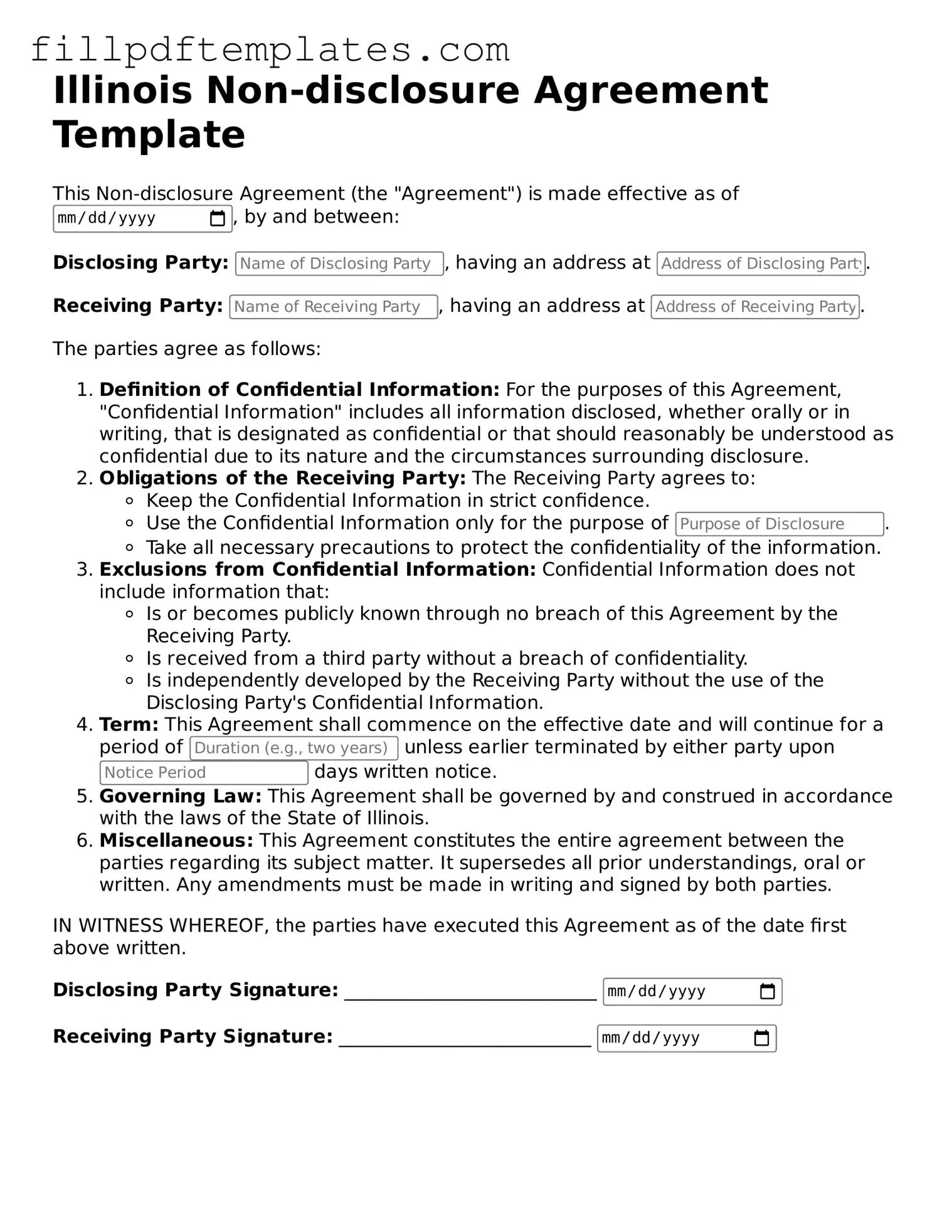Blank Illinois Non-disclosure Agreement Form
A Non-disclosure Agreement (NDA) in Illinois is a legal document designed to protect sensitive information from being disclosed to unauthorized parties. This form establishes a confidential relationship between the involved parties, ensuring that proprietary information remains secure. To safeguard your interests, consider filling out the NDA form by clicking the button below.
Get Form
